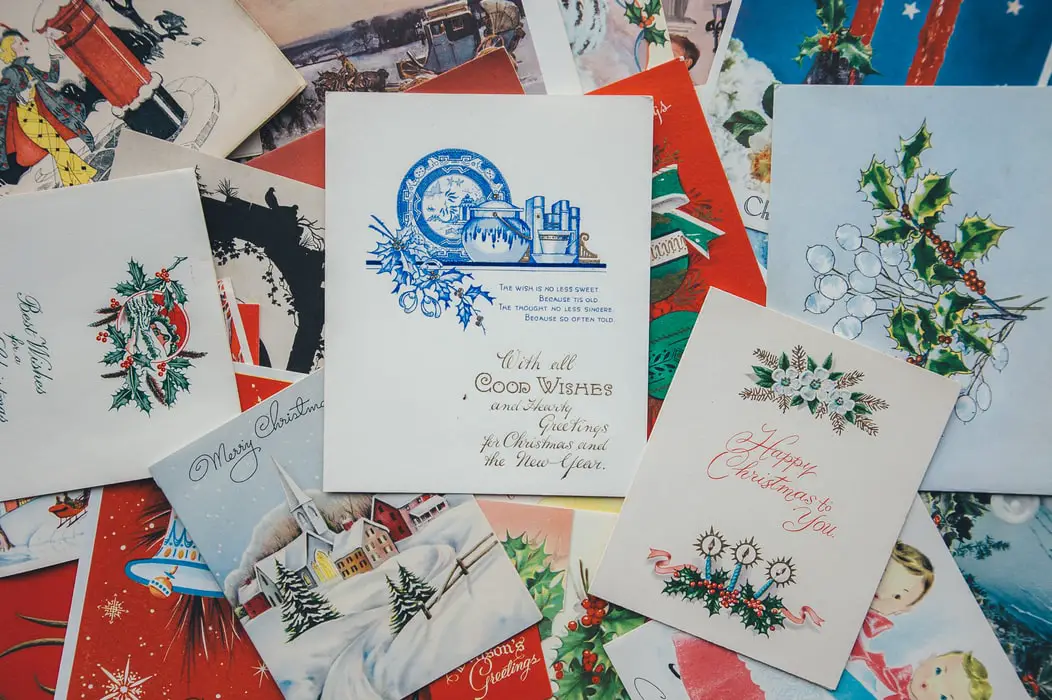At the end of each year, I open my junk drawer, grab the massive pile of cards that’s clogging it up and finally send them down the chute. Greeting cards are one element of the pre-digital age world that have not died out yet. However, their death might appear on the horizon.
Millennials have killed a wide range of products and industries in their lifetime — the diamond industry, cable TV and ironing just to name a few. So, it’s quite fitting that innocent, wholesome greeting cards would be next to die on the hit list.
However, what is actually dying are not the cards themselves. In fact, 6.5 billion of them are still purchased annually, according to the Greeting Card Association, and millennials are to thank for that. There’s a retained interest in sending out greetings during the year, part of which is due to the prevalence of technology. In other words, a physical card offers a way to break through the digital clutter.
Even so, the overall industry is declining by 3% annually. In addition, consumers are cutting back on purchases between the major holidays. As a result, some stores, such as Walmart and CVS, have trimmed their card sections — retail space for cards has decreased by more than 27% in the past five years.
What’s to blame isn’t the declining interest in cards themselves, but rather the format they take, which is shifting dramatically as a result of technology, accessibility and fluctuating ideals.
In the aftermath of social media and online shopping, people no longer have to drive to the store and peruse the card aisle to express their sentiments. They can simply post on somebody’s wall, tweet at them or send a quick text. Even email was projected to take over the industry according to Peter Doherty, executive director of the Greeting Card Association. “Over time [people] found they weren’t making the same meaningful connection,” he explained.
Those who do want to send something more thoughtful can select the perfect card online and have it mailed directly to the recipient. Or, even better, they can make the card themselves.
https://www.instagram.com/p/B5PIfCcgtUs/?utm_source=ig_web_copy_link
The latter is the alternative many millennials prefer. Shutterfly and Etsy, two online sites with customizable cards, have seen a huge climb in web traffic. In fact, Etsy alone experienced a 258% increase in the number of searches for custom cards over the course of one year.
Millennials want personalized content. They like sending cards specifically intended for a recipient, as opposed to slapping a stamp on a generic, store-bought card. This is especially true for holiday cards. Notably, Ken Sarafin, a Colorado graphic designer, began illustrating his sister’s family’s holiday cards to better capture her family’s essence.
The Sarafin siblings expressed their disdain for “Christmas cards that are overly cheesy and cutesy.” Instead, Sarafin intentionally illustrates scenes of chaos: for example, mom and dad drinking while the kids beat up on one another.
Nevertheless, there are still those who forgo sending paper cards altogether. For one, it can get expensive to buy and provide stamps for each and every holiday, birthday and baptism that goes on in a year. With e-cards, Facebook posts or texts, you at least know it will be free and delivered instantly.
Another reason to skip physical cards is because of its environmental impact, an urgent, legitimate concern of millennials. Unsustainable production of paper products is responsible for some of the most harmful effects on the environment.
Forty-six billion cards are thrown away annually, the majority of which are not completely recyclable. Glitter, foil, charms, cutouts, foiled-lined envelopes and ribbons must be disposed of in the garbage. Furthermore, musical cards contain mercury and are dangerous to recycle.
In addition, the manufacturing process pollutes the ground and water with lignin, alcohol, cholates and chlorine, and the distribution of the cards leads to carbon dioxide emissions. One study estimates that 18.5 grams of carbon dioxide are emitted per card sent through the mail. Assuming every card purchased annually gets sent through the mail, the result yields over 120 billion yearly grams of carbon emissions.
But, don’t give up hope. Many card manufacturers are taking the necessary steps to increase sustainability, including Hallmark. There are recycled cards, cards created without pollutants (like alcohol) and companies that responsibly produce paper and wood fiber. Even so, the best option still is to send digital greetings. Sorry Hallmark.
Overall, the greeting card industry hovers in an unsure space. On one hand, consumers enjoy giving and receiving a handpicked (often customized) sentiment, which is a step up from a simple Facebook post. They enjoy the personalized quality and thoughtfulness that went into its sending. Plus, let’s be real: As long as gift cards exist, so will greeting cards; I’ve never simply been handed a gift card for my birthday.
However, with closing card stores, decreased retail space and the all-encompassing presence of the digital world, do greeting cards truly hold a stable place in the 21st century? Perhaps by the time millennials reach their golden years, they’ll recount the stories to their grandchildren about how people used to send real, paid-for messages on paper across the world — just to let someone know that they were thinking about them.









![Illustration of a bedroom featuring the [as] bump](https://cdn-0.studybreaks.com/wp-content/uploads/2021/06/Why-is-your-TikTok-for-you_-page-crowded-with-homemade-adult-swim-bumps_-150x100.jpg)






